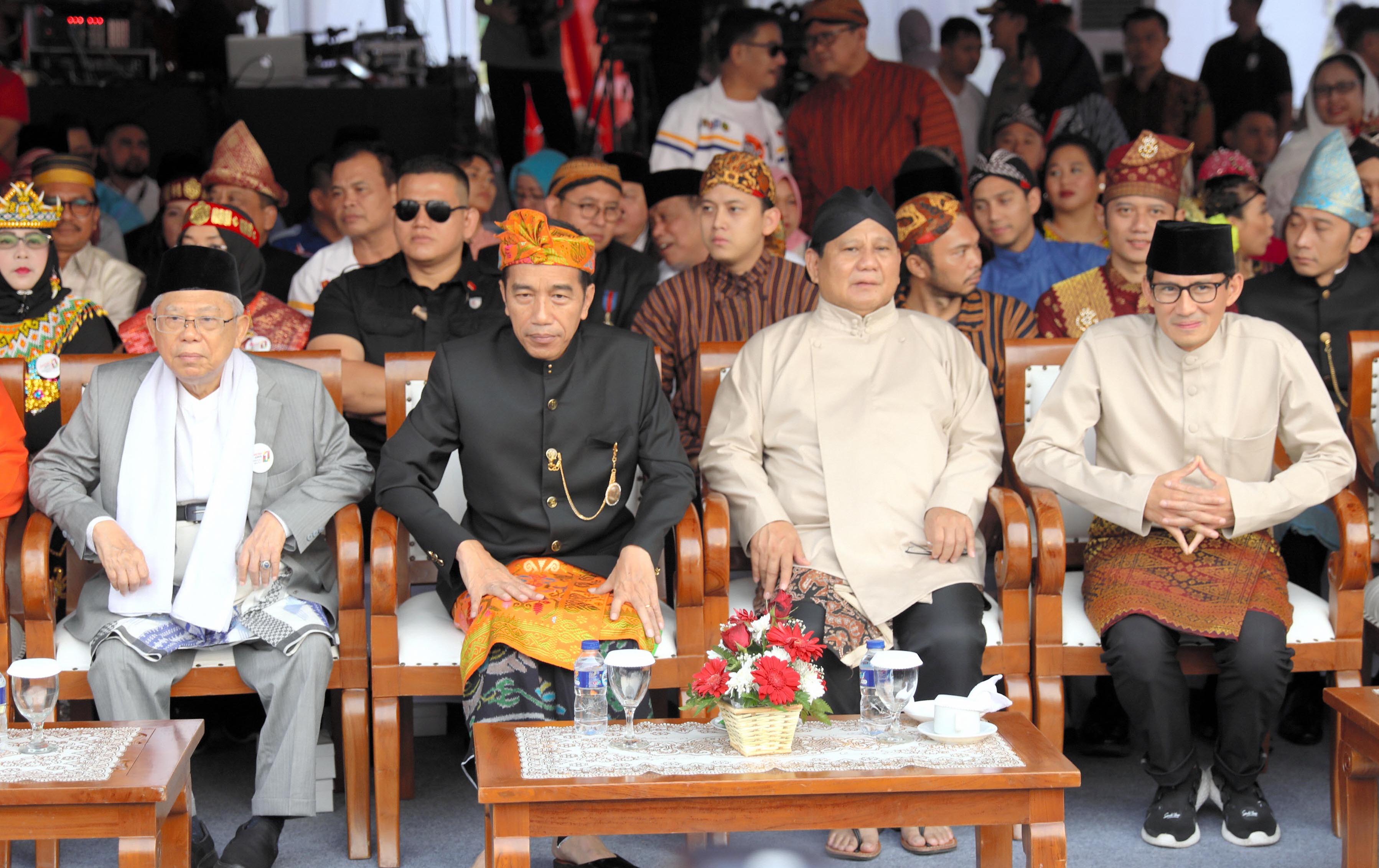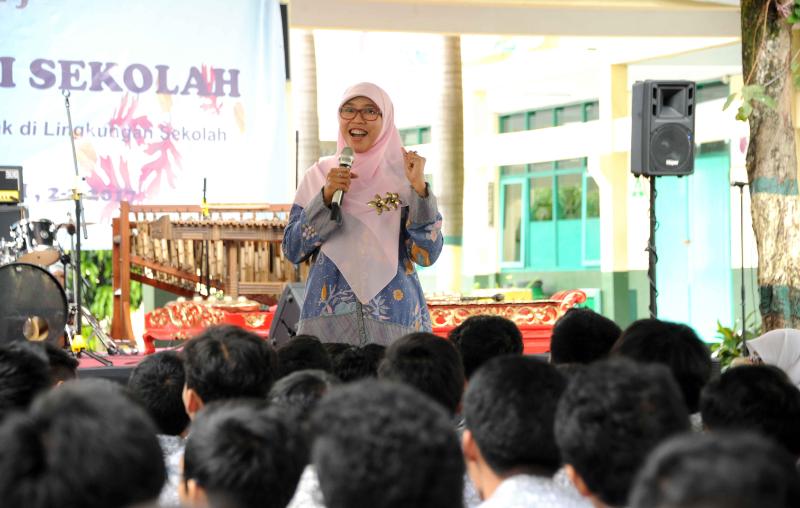
Politics & Society
20 years after Soeharto: Is Indonesia’s ‘era reformasi’ over?

The upcoming Indonesian elections will be the single largest election day in the world as up to 193 million Indonesians vote for a president, vice president and legislatures across the country
Published 20 February 2019
In April, up to 193 million eligible voters in Indonesia will head to the polls. For the first time in Indonesian history, the president, the vice president and members of the local and national legislatures will be elected on the same day.
So, what are the key facts you need to get your head around when it comes to the Indonesian election?

The 2019 election will be a rematch between incumbent President Joko “Jokowi” Widodo and Prabowo Subianto, the former military general implicated in the kidnapping of democracy activists between 1997 and 1998.
The two have already faced off in the bitterly-fought 2014 elections which saw Jokowi’s image as a clean, no-frills reformer with few ties to the military and political elite take him to victory.

Politics & Society
20 years after Soeharto: Is Indonesia’s ‘era reformasi’ over?
But five years on Jokowi’s reputation is tarnished. He has disappointed many of his supporters in civil society by abandoning campaign promises to resolve past violations of human rights, and by his choice of vice presidential running mate, the conservative Islamic scholar Ma’ruf Amin.
As result, voter dissatisfaction has led to a growing movement of people declaring that they would rather sit the election out or ‘donkey vote’ (golput) than vote for either of the candidates on offer.
While Ma’ruf was reportedly not Jokowi’s first choice for running mate, he was selected in part to deflect criticism that Jokowi isn’t Muslim enough. And it appears to have worked – attempts to politicise religion in the 2019 campaign have so far fallen rather flat.
Jokowi and Ma’ruf are supported by nine parties, representing about 60 per cent of seats in the national legislature (DPR), while Prabowo and his running mate, former Jakarta Deputy Governor Sandiaga Uno, are supported by five. Candidate pairs must be able to demonstrate that they have the support of parties holding at least 20 per cent of the seats in the DPR or 25 per cent of the total votes at the last election to run.

Two months out from the election, it looks like it will be difficult for Prabowo to catch Jokowi’s lead. But Jokowi is as weak a campaigner as Prabowo is strong, and Indonesian voters aren’t known for loyalty to parties.
When Indonesian voters head to the polls on 17 April, they will be presented with five different ballot papers: grey for the president and vice president, yellow for the People’s Representative Council (DPR), red for the Regional Representative Council (DPD), blue for the relevant provincial legislature (DPRD provinsi), and green for the relevant district or municipal legislature (DPRD kabupaten or kota).
This will be the first time ever that legislative and presidential elections are held on the same day. Sixteen parties will be competing for the 575 seats in the DPR.
It isn’t yet known how the introduction of simultaneous legislative and presidential elections will affect voting patterns, or political coalitions in the legislature in the period following the election.
The media has been transfixed by the presidential race, and there has been little discussion of party platforms or candidates’ promises and track records, and not much policy detail either.
As voters will be electing public officials at five different levels of public office, they will be expected to choose from 250 to 450 candidates in the electoral district in which they vote.
This will be no easy task, and to make matters worse, Indonesia’s leading elections-focused NGO, Perludem, has pointed out that one quarter of the candidates competing for seats in the DPR haven’t disclosed their personal details on the website of the Indonesian Electoral Commission (KPU).

With voters having little else on which to base their choices, many observers are worried that vote buying, already considered widespread in Indonesian legislative elections, will increase in the 2019 elections.
The elections represent the single largest election day in the world. According to the KPU, 192.8 million voters are eligible to cast their vote in one of 809,500 polling stations scattered across the archipelago.

Politics & Society
On Indonesia: Language, law and looking past the boats
Incredibly, more than 300,000 candidates are now campaigning, competing for 20,528 seats in Indonesia’s 34 provinces and more than 500 districts and municipalities.
On election day, polling booths are usually open from 7am to 1pm. Votes are then counted by electoral officials in front of the community, along with state electoral observers and party witnesses.
Then begins a long process of “recapitulation”, where votes are gathered and recounted at the subdistrict, district, then provincial level – a process that has historically been vulnerable to manipulation.
Although a formal result isn’t expected until some weeks after the election, “quick counts” by reputable polling companies will give a strong indication of results on the evening of voting day.

The introduction of quotas for women candidates has seen women’s representation climb significantly from just nine per cent in the first democratic elections held after the fall of Soeharto in 1999. Over the past two elections, however, women’s representation in the national legislature (DPR) has stagnated at about 18 per cent.
According to Indonesia’s electoral regulations, to be eligible to compete, political parties must have at least 30 per cent women candidates.

Politics & Society
Reversing Indonesia’s child marriage laws
These candidates must be distributed in a “zipper” fashion on the ballot paper, that is, one woman for every two men. Indonesia uses an “open proportional” electoral system, meaning voters are free to select whichever candidate they prefer, but candidates at the top of a party’s list are much more likely to be elected.
Electoral observers have expressed concern that in the 2019 elections, only 19 per cent of women candidates have been placed in the first position on the ballot paper, compared to 30 per cent of women candidates during the 2014 elections.
According to the KPU, about 40 per cent of eligible voters are millennials aged 17 to 35 years old. And many of them will be voting for the first time. So the new millennial vote is considered the key to victory.

But most attempts at attracting these young voters have been facile, involving superficial social media posts, and publicity stunts like appearances at rock concerts. Late last year, Jokowi’s party, the Indonesian Democratic Party of Struggle (PDI-P), even released a line of PDI-P-themed streetwear.
Young voters are typically seen as social media savvy, well educated, middle class and urban – but in reality only a fraction of millennials fit this stereotype.
Young voters are far from a homogenous group and many of those who are well connected online also hold deeply conservative views.

Politics & Society
Indonesian football: A matter of life and death
One survey of school and university students by Jakarta’s State Islamic University in late 2017 found that 33 percent of young Muslims believed that acts of intolerance against minorities were “not a problem” and 34 percent even believed that non-believers should be killed.
Indonesia is one of the largest social media markets in the world, making it fertile ground for the spread of hoaxes and misinformation.
It has the fourth-highest number of Facebook users in the world, at 130 million, and also ranks highly for Twitter, Instagram, WhatsApp and Line.
The past few years have seen a massive increase in the manipulation of social media for political ends with armies of so-called “buzzers” paid to push certain messages on social media ensuring that certain hashtags or topics trend on the platform. Only a small proportion of voters are active on Twitter, but these tactics can influence reporting in mainstream media.

An even greater concern, however, is WhatsApp, where the spread of rumours and hoaxes is much harder to monitor or control. WhatsApp groups can become echo-chambers, with misinformation and rumours shared rapidly among personal contacts.
Early in 2019, WhatsApp announced that it would only allow users to forward messages five times in an attempt to tackle the spread of misinformation in markets like Indonesia.
The scale of Indonesia’s election, alongside some of the issues and personalities that dominate it, make the world’s largest single election day one to watch in 2019.
Banner: Getty Images